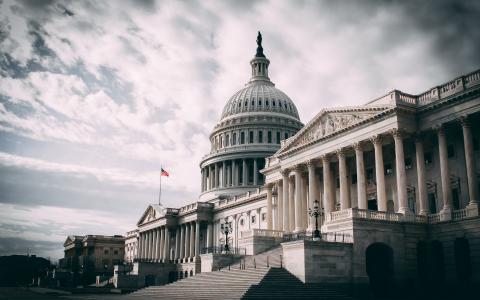
Stimulus negotiations continue, both Republican and Democratic lawmakers as well as the White Houseare in agreement that more stimulus checks are needed. Yet, progress has been slow so far and the summer recess is slated for this Friday, for now. If there’s broad agreement on stimulus checks, then what’s stopping them going out?
The primary issues are unemployment insurance and the total spending under the bill. It seems both can be resolved, though more horse trading will be needed. Ultimately, continuing weak economic data, as we saw with last week’s dire GDP numbers, and potentially a negative stock market reaction should talks drag on too long, may force the issue for lawmakers, especially with an election just over 90 days away.
Unemployment Insurance
Elevated unemployment insurance is a contentious issue. The Democrats believe it necessary to continue these payments given 11% U.S. unemployment on June data. However, Republicans note that 5 out of 6 people are earning more from unemployment insurance than they likely would working, on Congressional Budget Office analysis. Still, research from Yale suggests that those receiving elevated unemployment payments are still just as eager to work. There is also a potential implementation issue, many states who implement unemployment insurance use dated systems. This makes quickly fine-tuning the unemployment payments, to the degree many would like, potentially difficult.
Thus unemployment is perhaps the most contentious sticking point so far of the stimulus debate. In contrast, according to Marco Rubio’s statements over the weekend, there is more alignment on the evolution of the Paycheck Protection Program (PPP) and broad consensus on stimulus checks appears clear. This makes unemployment a key areas of contention. Republicans would like to cut spending on unemployment and are wary of the size of the total package, Democrats generally believe further spending is needed. A compromise may emerge along the lines Mitt Romney has proposed, where the level of unemployment spend tapers down over time, or perhaps according to economic milestones such as the unemployment rate itself. That bridges the current gap where Republicans generally want to cut the payment down to $200 a week, and Democrats for the most part would like to leave it at $600. This is a big ticket item too. It was the third largest item in March’s CARES Act after the Paycheck Protection Program and stimulus checks. Progress on unemployment insurance would go a long way to moving the stimulus deal forward.
Of course, while negotiations continue, no additional payments are going out because the $600 additional unemployment payments ended last week until further legislation passes. That’s something neither side appears fully comfortable with, hence creating a sense of urgency.
Total Spend Limits
Stimulus is expensive. The CARES Act cost trillions and boosted the national debt by around 8%. There is a strong desire, especially from Republican lawmakers, to make sure that government spending is contained.
Mitch McConnell targeted one trillion as the spending cap for the Republican-driven HEALS Act proposal, and the numbers appeared to add up. However, the HEROES Act, which passed the House in May under Democratic leadership, cost closer to three trillion. That’s triple the Republican target. This helps frame another source of contention. Democrats have a broad list of areas where they believe help is needed, but many Republicans are becoming nervous about the rocketing level of government debt. That trillion-dollar cap becomes hard to meet if a stimulus package includes stimulus checks, more PPP spending and further unemployment benefits. Or if it did, then there would be virtually nothing left for even other Republican spend items such as schools and healthcare. However, Democrats want to go beyond this with meaningful state and local government support and further economic support for individuals. This would take the package well beyond a trillion.
The Likely Outcome
Despite the rhetoric, both sides are closer than they may seem. It appears the Republican limit of a trillion in spend is unlikely to hold simply because PPP, checks and unemployment will take most of those funds, and there are other important objectives on the table for both sides that aren’t cheap. It also appears that $600 bonus unemployment payments will taper, though not as rapidly to $200 as the Republicans might favor. That’s not to say we won’t see more political games over the coming days, just as early responses to the 2008 recession were rejected by lawmakers before ultimately passing.
The Market Reaction
The prospect of no deal would rock both the economy and markets. It would mean a much weaker second half of 2020 than many expect, without the boost from stimulus checks or higher unemployment benefits. Yet, this outcome appears highly unlikely. As such, the market’s trajectory is dependent on many factors beyond the stimulus package alone, but just as the CARES Act demonstrated, a larger stimulus package, of closer to $2 trillion in spending will go a long way to sustain markets in the back half of 2020. If the total package is closer to a $1 trillion, then there will be less support for growth compared to recent months, and the market may ratchet down expectations accordingly. It seems checks will go out as part of any bill because all sides appear supportive of that measure. However, the market is watching to see how soon this occurs and how the current impasse on unemployment insurance is resolved and what that means for the total spending across the entire package.
This article originally appeared on Forbes.



